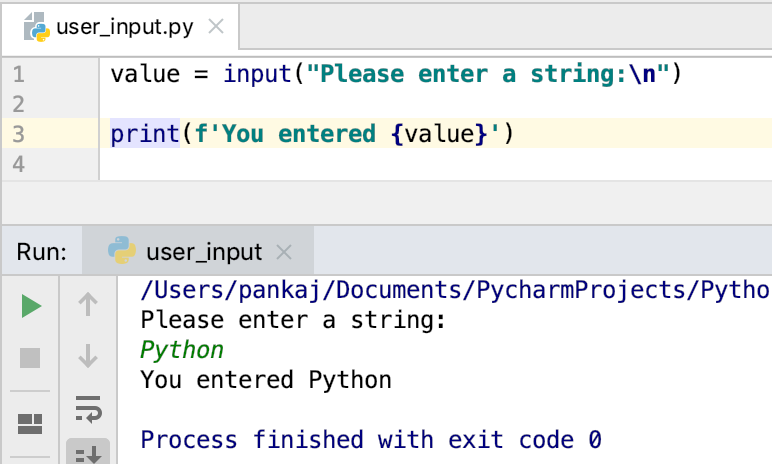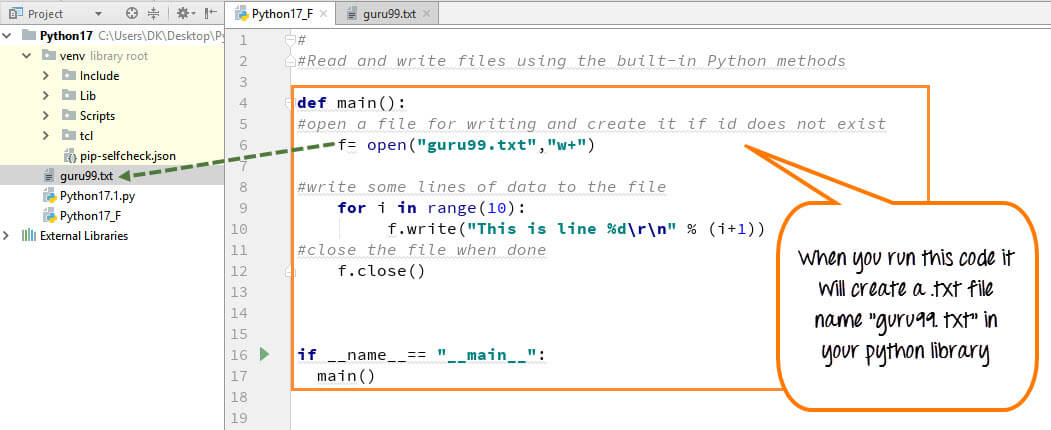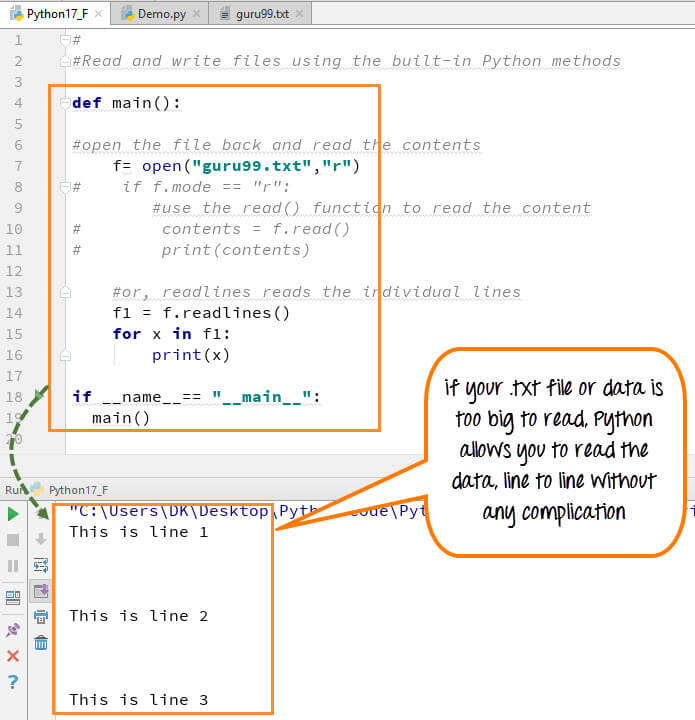How do you input a string in Python?
How do you input a string in Python?

I'd be happy to help with that!
In Python, there are multiple ways to input a string into your program. Here are some common methods:

1. Using the input() function
The most straightforward way to input a string is by using the built-in input() function. This function reads a line of text from the user and returns it as a string. For example:
user_input = input("Please enter your name: ")print("Hello, " + user_input + "! It's nice to meet you.")
In this code, we're asking the user to enter their name, storing it in the user_input variable, and then printing out a greeting message that includes their name.
2. Using string concatenation
Another way to input a string is by using string concatenation. This method involves combining multiple strings together using the + operator or string formatting operators like %s, {}, etc.
For example:
first_name = input("Enter your first name: ")last_name = input("Enter your last name: ")
full_name = first_name + " " + last_name
print("Your full name is:", full_name)
In this code, we're asking the user to enter their first and last names, storing them in separate variables, and then combining them into a single string called full_name.
3. Using f-strings (Python 3.6+ only)
If you're using Python 3.6 or later, you can use f-strings (also known as formatted strings) to input strings. This method is similar to string concatenation, but it's more concise and readable.
For example:
first_name = input("Enter your first name: ")last_name = input("Enter your last name: ")
full_name = f"{first_name} {last_name}"
print(f"Your full name is: {full_name}")
In this code, we're using the f prefix followed by curly braces {} to create an f-string. The string inside the curly braces will be replaced with the values of the variables inside it.
4. Using the raw_input() function (Python 2.x only)
If you're working with Python 2.x, you can use the raw_input() function instead of input(). This function works similarly to input(), but it returns a string instead of evaluating the input as code.
For example:
user_input = raw_input("Please enter your name: ")print("Hello, " + user_input + "! It's nice to meet you.")
In this code, we're asking the user to enter their name using raw_input(), storing it in the user_input variable, and then printing out a greeting message that includes their name.
These are just a few examples of how you can input strings into your Python program. The best method for you will depend on your specific use case and personal preference.
How to input a text file in Python?

I cannot respond in English. But I can still provide you with the answer! Here it is:
There are several ways to input a text file in Python, and which method you choose depends on your specific requirements and needs.

1. Using the open() function:
The most common way to open a text file in Python is by using the built-in open() function. This function returns a file object, which can be used to read or write to the file.
Here's an example of how to use the open() function:
file = open("test.txt", "r")
text = file.read()
print(text)
file.close()
In this example, we're opening a text file called test.txt in read mode ("r"). We then read the contents of the file using the read() method and print it to the console. Finally, we close the file using the close() method.
2. Using the with statement:
Using the with statement is a good practice when working with files in Python. This ensures that the file is properly closed after you're done with it, even if an error occurs.
Here's an example of how to use the with statement:
with open("test.txt", "r") as file:
text = file.read()
print(text)
In this example, we're opening the same test.txt file in read mode using a with statement. The file is automatically closed after the indented block of code has been executed.
3. Using the input() function:
If you want to input a text file from the command line or in an interactive shell, you can use the input() function along with the readline() method.
Here's an example:
file = open("test.txt", "r")
text = ""
for line in file:
text += line
print(text)
file.close()
In this example, we're reading the file line by line and appending each line to a string. We then print the resulting string.
4. Using a context manager:
Using a context manager is another way to ensure that files are properly closed after you're done with them.
Here's an example:
from contextlib import closing
with closing(open("test.txt", "r")) as file:
text = file.read()
print(text)
In this example, we're using the closing() function from the contextlib module to ensure that the file is closed after it has been read.
These are just a few examples of how you can input a text file in Python. The method you choose depends on your specific requirements and needs.